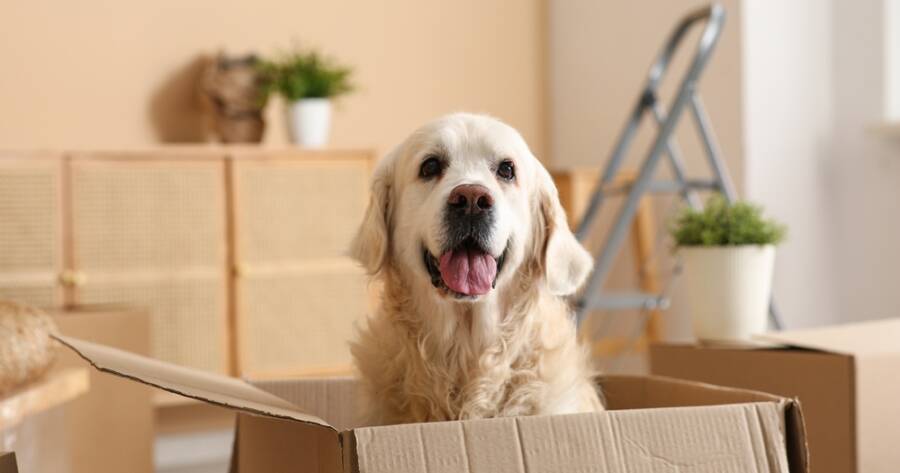Moving with pets adds an extra layer of planning, but the right approach helps keep the transition calm and manageable. Animals experience changes differently than humans, and new environments can feel overwhelming at first. A move becomes smoother when comfort, routine, and safety remain top priorities throughout the journey. Preparing early allows pets to adjust gradually while keeping stress levels low. With thoughtful steps and steady reassurance, a relocation can be a positive experience for both pets and their owners.
Preparing Pets for Travel and New Surroundings
Pets often sense changes in their environment well before moving day. Packing gradually helps maintain familiarity, preventing sudden disruptions that may cause anxiety. Introducing travel crates or carriers early gives pets time to explore and become comfortable with them. Keeping the crate open in a common area encourages positive associations rather than fear. This preparation establishes a foundation for calmer travel.
Offering extra reassurance during this period is helpful. Maintaining feeding schedules, exercise routines, and designated quiet spaces gives pets stability while the home shifts around them. Some pets may benefit from short test drives in their carrier or vehicle to help them adjust to travel. The goal is to reduce uncertainty and make moving day feel like a natural part of their routine rather than a stressful event.
Essential Supplies and Safety Measures for Moving Day
Having the right supplies ready ensures pets stay safe and comfortable throughout the move. Travel carriers, leashes, food, medications, and favorite toys should be packed in an easily accessible bag. This makes it simple to care for pets during rest stops or delays. Collars with updated tags or microchip information help ensure pets can be identified in case they become frightened and run.
Safety during transport is equally important. Pets should be secured in a carrier or harness rather than roaming freely in the vehicle. Sudden stops, shifting boxes, or open doors can create unsafe situations, especially on long drives. A stable, cozy setup inside the car keeps pets calmer and prevents unexpected accidents. Small details like window shades and familiar blankets make travel more comfortable and reduce stress during the journey.
Maintaining Routine Throughout Long-Distance Travel
Long-distance travel can feel disorienting for pets, which makes routine vital. Scheduled feeding times, bathroom breaks, and rest stops help maintain a sense of normalcy throughout the trip. Cats or anxious animals may prefer a covered carrier to create a darker, more peaceful environment. Dogs usually benefit from periodic walks to release energy and stretch their legs.
Consistency helps animals adapt more easily once they arrive at the new home. Bringing along familiar items, such as bedding or toys, provides comfort and stability. If travel spans multiple days, choosing pet-friendly hotels ensures safe rest between legs of the journey. When pets feel supported and cared for, they recover faster from the disruptions of moving and settle more smoothly into the new environment.
Helping Pets Adjust to a New Home
The first few days in a new home can be overwhelming for pets, especially if the space includes unfamiliar scents and sounds. Setting up a quiet room with bedding, food, and water creates a safe zone for early exploration. Allowing pets to adjust at their own pace helps prevent anxiety or overstimulation. Gradual exposure to the rest of the home leads to more confident movement throughout the space.
Keeping the environment predictable supports a healthy adjustment. Maintaining consistent feeding, playtime, and sleep routines fosters familiarity. Dogs often benefit from guided walks around the neighborhood to learn the new surroundings. Cats may need secure hiding spots until they feel ready to explore further. With patience and careful observation, pets grow more comfortable as the new home becomes their own.
Understanding Stress Signals and Supporting Emotional Health
Pets express stress in different ways, and awareness of those signals helps owners respond early. Changes in appetite, vocalization, or behavior may indicate overwhelm. Offering reassurance, extra attention, and quiet moments helps pets regulate their emotions during the transition. Some animals may require temporary calming aids, which can be recommended by a veterinarian based on individual needs.
A steady, gentle approach encourages pets to feel secure. Monitoring their behavior during the first week helps identify any lingering discomfort or stress. If concerns persist, consulting a veterinarian or animal behavior expert can provide additional guidance. Supporting emotional well-being is just as important as physical comfort during a move, helping pets feel settled and safe in their new surroundings.
Creating a Confident Transition for Pets
A successful move with pets depends on preparation, attentiveness, and a calm environment. By maintaining routines, preparing travel essentials, and supporting emotional needs, the moving process becomes more manageable for animals. Each thoughtful step reduces stress and builds a sense of security as pets discover their new home. With patience and care, the transition unfolds smoothly, allowing both pets and owners to settle in with greater confidence.

